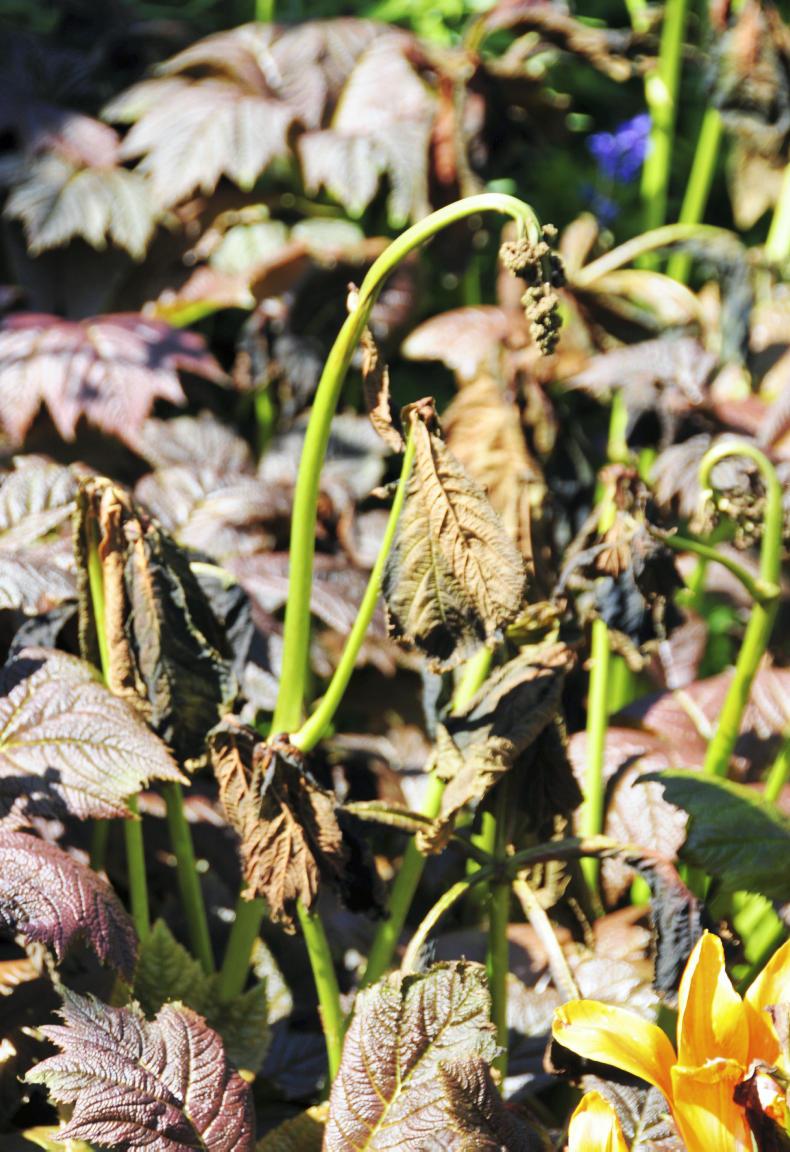Anybody familiar with the flowers of the potato plant, or the tomato, will instantly see the close family resemblance with the Chilean potato tree.
The flowers are practically identical in structure and size. Even the purple-blue colour of some potato varieties closely matches the potato tree flowers, right down to the yellow anthers held in a tight ring at the centre of the flowers.
These are all members of the potato genus, solanum. The Chilean potato tree is Solanum crispum, while the potato itself is Solanum tuberosum.
The potato tree leaves are not as large or as broad as those of the potato, but they have something of the same shape, and they are evergreen, or semi-evergreen if the winter is not too harsh.
Like many plants native to Chile, the blue potato tree is not fully hardy and can be damaged in a hard frost, but it gets through most winters unscathed, especially in a mild garden.
Being a bit tender is not altogether bad, because such plants tend to have something of an exotic touch about them and they bring that to the garden. This plant certainly does.
The name of tree is a bit of a stretch, because it really only makes a rather floppy bush. Still, it can make 3m or more if encouraged upwards – and this is tree-like compared to potato plants.
The potato tree has woody stems and branches to support it so it can reach some height, but it is not strongly woody and tends to scramble about.
Most of the flowering occurs on the top of the plant, and it looks a pretty picture in full flower in early summer. This is its peak of flowering for the year, but it produces a long tail of spasmodic flowering as new shoots are produced.
The potato vine has large clusters of flowers held on upright and arching twigs. The flowers have a sweet fragrance. Small, green-yellow berries are sometimes formed, though they have very little decorative value in any case.
The best form of this plant is called ‘Glasnevin’, named for the National Botanic Gardens in Glasnevin, Dublin – usually the only kind on offer – and it flowers into autumn in good conditions.
The potato tree is very fast-growing as a young plant, making very rapid, soft growth in the first few years before diverting much of its energy into flowering. It is an ideal plant for decorating a fence while other more slow-growing climbers get established. And even if it does not last for a long time, it will have done its job.
The Chilean potato is very easy to grow, happy in any ordinary soil that does not get waterlogged in winter, as all kinds of potato relatives tend to rot in the wet. A nice, fertile soil is best, as overly rich soil can make for very soft growth late in the season and leave it prone to frost damage.
The right soil conditions will make a more compact, bushy plant with a bigger show of flowers. It is not a true climber, and needs to be trained up on a fence or wall using wires on the wall to tie it onto. Secure support is necessary to prevent the whole top blowing off a fence in a gale.
To keep the plant to a neat shape, some shoots can be tied into position or shortened, and badly placed stems removed. Any pruning is done immediately after the main flush of flowers, and frost damaged bits can be removed in late spring. CL
Late April frost
There is always a danger of frost in April and to the end of May in most of the country more than a few kilometres from the coast. In the last days of April, after weeks of chilly polar air, there was quite a damaging frost in the inland areas, killing the new shoots of susceptible flowers and shrubs. Among those affected were pieris, Hydrangea aspera and rodgersia. Very early-sown potatoes were tipped back too, which can affect yield as they struggle to recover.
The plants affected now look a bit miserable, but given the surge of spring growth, they will soon re-grow and recover the damage. Bedding flowers can be ruined, especially if not hardened off and fresh out of a greenhouse. If bedding plants have suffered, they might need to be replaced.
>> This week
Fruit, vegetables and herbs
If early-sown crops have been delayed by cold weather, wait for warmer days to sow second batches of lettuce, radish, rocket and peas. French beans like warmth to grow quickly and outpace slugs. Time enough for the other tender vegetables too, such as sweetcorn and courgettes.
Lawns
Lawn growth was advanced, but constant cold wind slowed things down. Dry weather has stressed grass too, especially on dry free-draining ground. No feeding should be done until there has been a period of good, slow rain and grass is growing well again. Trim the edges around flower beds.
Trees, shrubs and roses
Check that young trees and shrubs are not suffering from drought, as young plants may not have rooted properly. Tie in the new shoots of climbing roses so that they will be in the correct position for training later. In dry weather, there is no need to spray roses against blackspot disease.
Flowers
Bedding plants should be planted out in the coming two weeks or so, now only in mild coastal areas. Due to a mild winter, large numbers of slugs and snails over-wintered this year, though hampered by cold, dry air. Severe damage can be done to plants like hostas and rodgersias.
Greenhouse and house plants
Feed greenhouse plants strongly now to get good growth before mid-summer and water well. Watch for pest build-up. Houseplants can be re-potted now. Plant out tomatoes, chilli peppers, cucumbers and sweet peppers as soon as space becomes available in the greenhouse.






 This is a subscriber-only article
This is a subscriber-only article






SHARING OPTIONS: